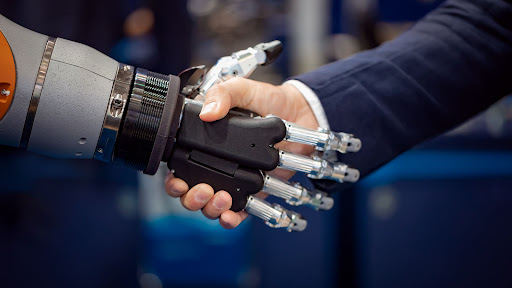In the rapidly evolving world of warehousing and distribution, staying ahead of the competition requires innovative solutions that can boost efficiency, reduce costs, and improve overall productivity. One such solution that has been revolutionizing the industry is the integration of automation and robotics. From a distribution facility to a fulfillment center, learn how automation and robotics play a significant role in modernizing their processes here.
The Changing Landscape of Warehousing
Over the years, the landscape of warehousing and distribution has undergone a significant transformation. The rise of e-commerce and consumer demands for faster and more accurate deliveries have driven the need for streamlined operations. Automation and robotics have emerged as key players in meeting these challenges.
Benefits of Automation & Robotics
The integration of automation and robotics into warehousing and distribution operations offers a multitude of benefits:
- Enhanced Efficiency: Automation reduces the reliance on manual labor, allowing for faster and more efficient processes. Robots can work around the clock without breaks or fatigue, increasing productivity.
- Improved Accuracy: Automation systems and robots are highly precise, minimizing errors in order fulfillment, inventory management, and other critical tasks. It leads to higher customer satisfaction and fewer returns.
- Cost Reduction: While there is an initial investment in automation technology, the long-term cost savings are significant. Lower labor costs, reduced error-related expenses, and optimized space utilization contribute to overall savings.
- Increased Speed: Automation and robots can process orders and move goods at speeds far greater than human workers, enabling same-day or even one-hour deliveries, meeting the demands of today’s consumers.
- Space Optimization: Automation allows for better use of available space within a fulfillment center. Vertical storage systems, automated conveyors, and robots that can navigate tight spaces make the most of square footage.
- Safety Enhancement: Dangerous or physically demanding tasks can be assigned to robots, reducing the risk of injuries to human workers. Safety measures like sensors and cameras further enhance workplace safety.
- Scalability: Automation systems and robots can be easily scaled to handle increased workloads during peak seasons, ensuring that operations remain efficient and effective.
Types of Automation & Robotics
There are various forms of automation and robotics used in modern fulfillment centers and distribution facilities:
- Automated Storage and Retrieval Systems (AS/RS): AS/RS systems use robotic cranes to store and retrieve products from high-density storage racks. They are ideal for optimizing vertical space and ensuring quick access to inventory.
- Autonomous Mobile Robots (AMRs): AMRs are self-navigating robots that move throughout a warehouse to perform tasks like picking and transporting items. They are highly flexible and adaptable.
- Conveyor Systems: Conveyor systems automate the movement of products within a fulfillment center. They can transport items between different areas, sort them, and merge multiple conveyor lines.
- Robotic Picking Systems: These systems use robots equipped with vision systems and grippers to pick items from shelves or bins. They are especially useful for e-commerce order fulfillment.
- Drones: In some cases, drones are used for aerial inventory tracking, monitoring warehouse conditions, and even delivering small packages within a facility.
- Automated Guided Vehicles (AGVs): AGVs are mobile robots that follow predefined paths to transport goods. They are commonly used in material handling and inventory replenishment.
Real-World Examples
Several major players in the retail and logistics industry have embraced automation and robotics to enhance their warehousing and distribution operations:
- Amazon: The e-commerce giant has invested heavily in automation and robotics. Its fulfillment centers feature thousands of robots that transport shelves of products to human workers for packing.
- Alibaba: The Chinese e-commerce company uses robots for sorting and organizing packages in its distribution centers. This automation has significantly improved efficiency.
- Ocado: This UK-based online grocery retailer relies on robots, automation, and AI to fulfill customer orders quickly and accurately.
- FedEx: The global shipping company has implemented autonomous robots in its warehouses to assist with sorting and moving packages.
Future Trends
The integration of automation and robotics in warehousing and distribution is an ongoing trend with several exciting developments on the horizon:
- Artificial Intelligence (AI): AI-powered robots and systems will become even smarter, capable of making real-time decisions and adapting to changing environments.
- Collaboration between Humans and Robots: The future will likely see increased collaboration between human workers and robots, with robots handling repetitive tasks while humans focus on more complex operations.
- Customization: Automation solutions will be tailored to specific warehouse needs, offering greater flexibility and adaptability.
- Sustainability: Warehouses and distribution centers will seek to minimize their environmental footprint through eco-friendly automation technologies.
Automation and robotics are reshaping the landscape of modern warehousing and distribution – their integration offers numerous advantages, including increased efficiency, improved accuracy, and cost reduction. As technology advances, fulfillment centers and distribution facilities that embrace automation and robotics are poised to meet the ever-increasing demands of today’s consumers while staying competitive in a rapidly evolving industry.
Follow Techdee for more!





